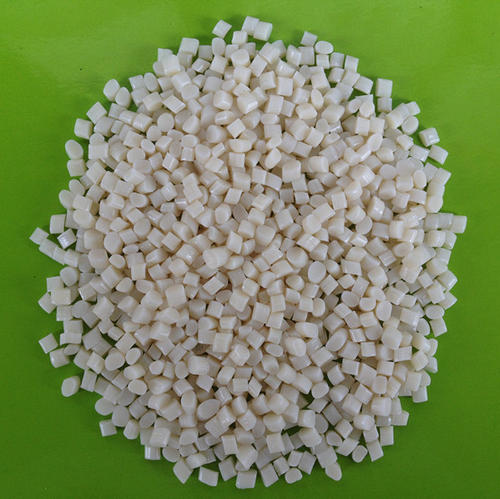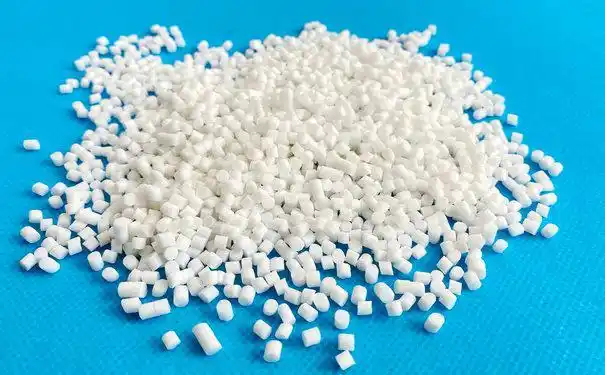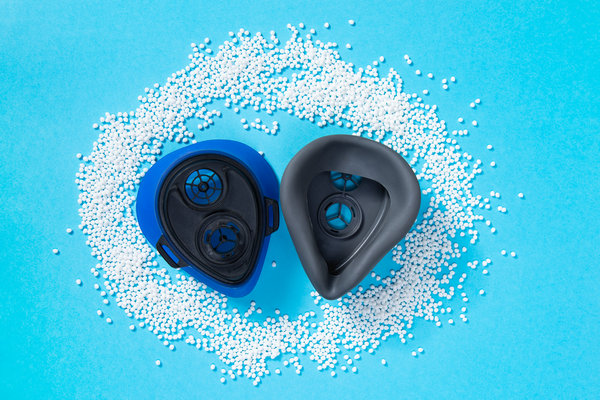Thermoplastic Elastomer (TPE) soft gels have become a staple in industries ranging from toys to medical devices, prized for their flexibility, durability, and eco-friendly nature. But there’s a nagging issue that many users encounter: why does TPE turn yellow over time? As someone who’s spent years in the materials industry, I’ve seen this question pop up repeatedly, often accompanied by frustration when a once-pristine product starts to look aged and discolored. It’s like watching a favorite white shirt slowly lose its vibrancy—disheartening, to say the least. This article dives deep into the reasons behind TPE yellowing, offering practical solutions to keep your products looking fresh. We’ll explore the science, share some real-world insights, and provide actionable tips to tackle this pesky problem.

Understanding the User’s Concern
When someone searches “why does TPE soft elastomer turn yellow over time,” they’re likely dealing with a product that’s lost its aesthetic appeal or worrying about its long-term performance. Maybe it’s a phone case that’s gone from sleek to sallow, or a medical device that needs to maintain a clean, professional look. The user wants to know what’s causing this change and, more importantly, how to prevent or fix it. They’re seeking clarity on whether this is a material flaw, an environmental issue, or something they can control. My goal here is to break it down in a way that’s both informative and relatable, blending technical know-how with practical advice.
The Science Behind TPE Yellowing
TPE, or thermoplastic elastomer, is a versatile material that combines the elasticity of rubber with the processability of plastic. It’s like a chameleon in the materials world, adapting to countless applications. But its chemical makeup, particularly when based on styrene-based block copolymers like SEBS (styrene-ethylene-butylene-styrene) or SBS (styrene-butadiene-styrene), makes it susceptible to yellowing. Let’s unpack the main culprits behind this phenomenon.
1. Ultraviolet (UV) Light Exposure
Imagine leaving a book in the sun for weeks—its pages start to yellow, right? TPE behaves similarly. UV light is one of the primary causes of yellowing in TPE soft gels. The material contains unsaturated bonds, like carbon-carbon double bonds, which are highly reactive. When exposed to UV rays, these bonds can oxidize, forming chromophores—color-producing groups that give the material a yellowish tint. This is especially true for outdoor products like garden tools or sports equipment, which bask in sunlight for hours.
In my early days working with TPE manufacturers, I recall a client who produced outdoor toys. Their bright white TPE components turned a sickly yellow after just a few months on store shelves. The culprit? Display windows with no UV protection. It was a costly lesson in material selection and environmental control.
2. Thermal Oxidation
Heat is another silent saboteur. When TPE is exposed to high temperatures—whether during processing, storage, or use—it can undergo thermal oxidation. This process breaks down the polymer chains, creating new chemical groups that alter the material’s color. Think of it like overcooking a piece of toast; what starts as golden brown can quickly turn charred. For TPE, this often manifests as a yellow or brownish hue.
I once visited a factory where TPE products were stored near a poorly ventilated oven. The heat accelerated the aging process, and the once-clear TPE grips looked like they’d been dipped in weak tea. Proper storage conditions could have saved them a lot of rework.
3. Chemical Interactions
TPE doesn’t live in a vacuum—it interacts with its environment. Chemicals like oils, solvents, or even certain cleaning agents can react with the material, triggering discoloration. For instance, TPE used in medical devices might come into contact with disinfectants, which can degrade the polymer over time. Similarly, in consumer products like phone cases, oils from human skin can seep into the material, contributing to yellowing.

4. Material Composition
Not all TPEs are created equal. The base material and additives play a huge role in how resistant a TPE is to yellowing. For example, SEBS-based TPEs generally have better UV resistance than SBS-based ones because SEBS is hydrogenated, reducing the number of reactive double bonds. Low-quality colorants or fillers can also exacerbate yellowing. If a manufacturer cuts corners with cheap pigments, the TPE is more likely to discolor under stress.
5. Aging and Environmental Factors
Time spares no one, not even TPE. Natural aging occurs as the material is exposed to oxygen, ozone, or humidity over extended periods. These environmental factors slowly degrade the polymer structure, leading to color changes. It’s like the slow fade of an old photograph left on a shelf—inevitable, but manageable with the right care.
Solutions to Prevent and Mitigate TPE Yellowing
Now that we’ve pinpointed the causes, let’s talk solutions. The good news? Yellowing isn’t an inevitable fate for TPE products. With the right strategies, you can keep your TPE looking as good as new. Below, I’ve outlined practical approaches, complete with a handy table summarizing key methods.
1. Use UV-Resistant TPE Formulations
Choosing the right TPE grade is like picking the perfect sunscreen for a day at the beach. SEBS-based TPEs are a solid choice for applications exposed to sunlight, as their hydrogenated structure makes them less prone to UV-induced oxidation. Some manufacturers also offer TPE grades with built-in UV stabilizers—think of these as a protective shield for your material.
2. Incorporate UV Stabilizers and Antioxidants
Additives are your best friends here. UV stabilizers (like hindered amine light stabilizers, or HALS) and antioxidants can significantly extend the life of TPE products. These compounds work by neutralizing free radicals formed during UV or heat exposure, preventing the formation of chromophores. In my experience, products formulated with high-quality stabilizers maintain their color for years, even under harsh conditions.
3. Optimize Processing Conditions
During manufacturing, controlling processing temperatures is critical. Excessive heat can kickstart thermal oxidation, setting the stage for yellowing down the line. Ensure that injection molding or extrusion temperatures stay within the recommended range for your TPE grade. Also, avoid overworking the material, as prolonged processing can degrade its structure.
4. Apply Protective Coatings
Think of a protective coating as a raincoat for your TPE product. UV-resistant coatings or clear films can shield the material from sunlight and chemicals. These are especially useful for outdoor applications or products exposed to frequent handling, like phone cases or tool grips.
5. Store and Use Products Thoughtfully
Proper storage and usage can make a world of difference. Store TPE products in cool, dry, and dark environments to minimize exposure to heat, light, and humidity. For end-users, advise keeping products away from direct sunlight or harsh chemicals. A little care goes a long way—think of it like storing fine wine to preserve its quality.
6. Regular Maintenance
For products already in use, cleaning with mild, non-aggressive agents can help maintain appearance. Avoid harsh chemicals like bleach, which can accelerate yellowing. A gentle wipe with a damp cloth can keep TPE surfaces looking fresh without causing damage.
|
Solution |
Description |
Best For |
Effectiveness |
|---|---|---|---|
|
UV-Resistant TPE |
Use SEBS-based TPE or grades with UV stabilizers to reduce oxidation. |
Outdoor products, transparent TPE |
High |
|
Additives (UV Stabilizers, Antioxidants) |
Incorporate HALS or antioxidants to neutralize free radicals. |
All TPE applications |
High |
|
Optimized Processing |
Control molding/extrusion temperatures to prevent thermal degradation. |
Manufacturing stage |
Moderate to High |
|
Protective Coatings |
Apply UV-resistant coatings to shield TPE from environmental factors. |
Outdoor or high-contact products |
Moderate |
Real-World Applications and Insights
To bring this to life, let’s consider a few scenarios where TPE yellowing is a concern. In the toy industry, TPE is popular for its soft, safe texture. But toys left in sunny playrooms or outdoor spaces often yellow, disappointing parents and kids alike. By switching to SEBS-based TPE with UV stabilizers, manufacturers can ensure their products stay vibrant.
In the medical field, TPE is used for items like catheters or infusion bags. Yellowing here isn’t just cosmetic—it can raise concerns about hygiene or material integrity. I once worked with a medical device company that solved this by incorporating high-grade antioxidants and storing products in UV-protected packaging. The result? Devices that looked pristine even after months on hospital shelves.

For consumer electronics, like phone cases, yellowing is a common complaint. A friend of mine bought a clear TPE phone case, only to watch it turn yellow within a year. The fix? She switched to a case with a UV-resistant coating and started storing her phone in a shaded bag when not in use. Small changes, big impact.
Emotional Impact and Why It Matters
There’s something deeply frustrating about watching a beloved product lose its charm. Yellowing TPE can feel like a betrayal—a product you trusted to stay beautiful suddenly looks worn and tired. For manufacturers, it’s not just about aesthetics; it’s about brand reputation and customer satisfaction. For end-users, it’s about preserving the joy of owning something that looks as good as it performs. By addressing yellowing proactively, you’re not just saving a product—you’re preserving trust and delight.
Practical Tips for Manufacturers and Consumers
For manufacturers, the key is to prioritize material selection and testing. Work closely with your TPE supplier to choose grades suited for your application. Conduct accelerated aging tests to simulate UV and heat exposure—think of it as a stress test for your product’s longevity. And don’t skimp on additives; investing in quality stabilizers is like buying insurance for your product’s appearance.
For consumers, it’s about being mindful. If you’re buying TPE products, check if they’re labeled as UV-resistant. Store them thoughtfully—away from windows, radiators, or harsh chemicals. And if yellowing starts, don’t despair. Sometimes, a gentle clean or a protective cover can work wonders.
Looking Ahead: Innovations in TPE
The materials industry is always evolving, and TPE is no exception. Researchers are developing next-generation TPEs with enhanced resistance to yellowing, thanks to advanced polymer structures and nano-additives. Some companies are even exploring bio-based TPEs, which promise better environmental stability. It’s an exciting time, and I’m optimistic that future TPEs will be even more resilient, keeping that fresh-from-the-box look for years.

Related Questions and Answers
To wrap things up, here are some common questions users might have about TPE yellowing, answered in a way that’s clear and engaging:
Q: Can yellowed TPE be restored to its original color?
A: Unfortunately, once TPE has yellowed due to oxidation, it’s tough to reverse. The chemical changes are permanent, like a stain that won’t wash out. However, you can prevent further yellowing with protective coatings or by limiting UV exposure. For cosmetic fixes, consider repainting or covering the product.
Q: Are all TPE products prone to yellowing?
A: Not equally. SEBS-based TPEs are more resistant than SBS-based ones due to their hydrogenated structure. Products with UV stabilizers or antioxidants also fare better. It’s like choosing a car with better rust protection—some are just built to last longer.
Q: How can I tell if a TPE product is UV-resistant?
A: Check the product specs or ask the manufacturer. Look for terms like “UV-stabilized” or “SEBS-based.” If you’re buying consumer goods, brands that emphasize durability often use better formulations. It’s worth doing a quick check to avoid disappointment.
Q: Does yellowing affect TPE’s performance?
A: In most cases, yellowing is cosmetic and doesn’t impact functionality. However, severe degradation (from prolonged UV or heat exposure) can weaken the material. Think of it like sunburned skin—it might still work, but it’s not at its best.
Q: Are there eco-friendly ways to prevent TPE yellowing?
A: Absolutely! Opt for TPEs with bio-based stabilizers or recyclable coatings. Proper storage and minimal chemical exposure also help. It’s like going green while keeping your products looking pristine.





